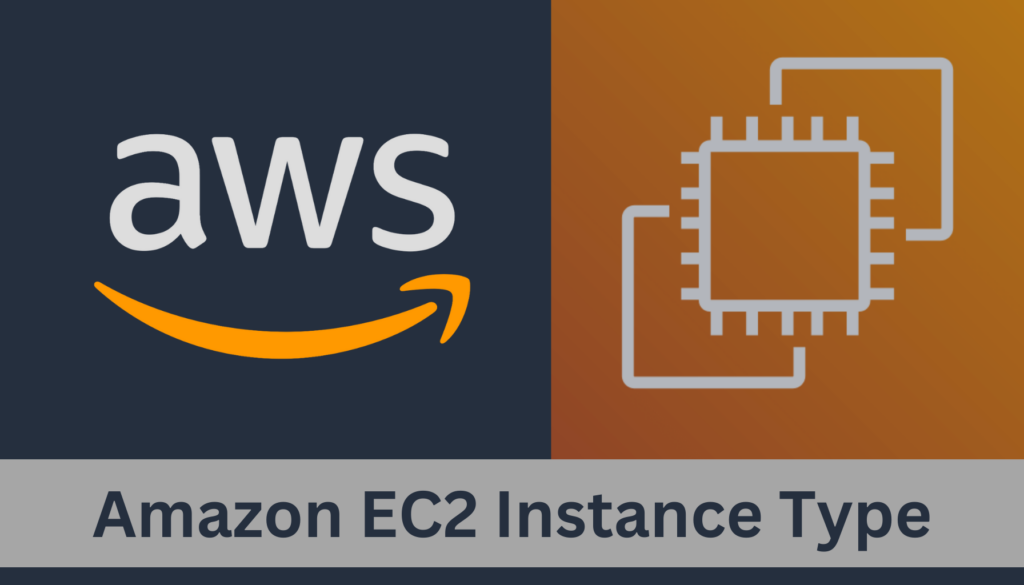The flexibility and scalability offered by Amazon Web Services (AWS) through its Elastic Compute Cloud (EC2) have revolutionized how businesses deploy and manage applications. EC2 provides resizable computing capacity in the cloud, making web-scale computing easier for developers and businesses. However, with the vast array of instance types available, each optimized for different use cases, selecting the right EC2 instance type can be a complex task. This choice is crucial for achieving the desired balance between performance, cost, and scalability for your applications.
Understanding EC2 Instance Types
Amazon EC2 instance types are classified based on their optimized capabilities and use cases. These categories include General Purpose, Compute Optimized, Memory Optimized, Storage Optimized, and Accelerated Computing. Each category serves different computing needs ranging from general web application hosting to complex scientific computing.
1. General Purpose Instances
General Purpose Instances provide a balance of computing, memory, and networking resources and can efficiently handle a variety of workloads. These instances are versatile and can be used for applications that do not require specialized hardware optimizations. The latest generation of General Purpose Instances includes the T3 and M5 families, which offer a good balance of performance and cost.

Source: Amazon EC2 Instance Type
Real-life Use Case: Web Hosting and Development Environments
Web Hosting: General Purpose Instances are ideal for hosting web applications and websites. For example, a startup can use T3 instances for their web servers to handle variable traffic loads efficiently. The burstable performance capability allows the instance to handle sudden spikes in traffic, ensuring a smooth user experience without incurring the cost of a more powerful instance type constantly.
Development Environments: Developers often need environments where they can build and test applications without worrying about resource constraints. M5 instances provide a stable and cost-effective solution for development, testing, and staging environments. They offer enough performance to mimic production environments closely, allowing developers to catch issues before deployment.
2. Compute Optimized Instances
Compute Optimized Instances are designed for high-performance computing (HPC) workloads that require intensive compute cycles. These instances are ideal for applications that benefit from high CPU performance, such as batch processing, media transcoding, scientific modeling, high-performance web servers, and gaming servers. The latest generation, including the C5 and C6g instances, features high-performance processors and enhanced networking capabilities for compute-intensive applications.

Source: Amazon EC2 Instance Type
Real-life Use Case: Batch Processing Workloads
Batch Processing: Compute-optimized instances are particularly well-suited for batch processing jobs, where tasks are executed as a series of jobs. An example is a financial institution performing daily risk assessment calculations on large datasets. These tasks require high CPU resources for a limited period, making C5 or C6g instances an excellent choice due to their high compute performance and ability to process tasks quickly, reducing the time to complete the batch jobs.
3. Memory Optimized Instances
Memory Optimized Instances are designed for workloads that require large amounts of memory. These instances offer the highest ratio of memory to CPU among all EC2 instances, making them ideal for applications that process large data sets in memory. The latest families in this category, such as the R5 and R6g instances, are equipped with fast processors and provide ample memory, which is beneficial for memory-intensive applications.

Source: Amazon EC2 Instance Type
Real-life Use Case: High-performance Databases
High-performance Databases: Memory Optimized Instances are particularly suitable for high-performance database workloads, such as transactional databases, large in-memory databases (like SAP HANA), and real-time big data analytics platforms. For example, a large e-commerce platform can use R5 instances to power its transactional databases that support the platform’s online transactions.
4. Storage Optimized Instances
Storage Optimized Instances are specifically designed for workloads that require high, sequential read and write access to very large data sets on local storage. They are optimized to deliver tens of thousands of low-latency, random I/O operations per second (IOPS) to applications. This category includes instances such as the I3 and H1 families, which are well-suited for NoSQL databases, in-memory databases, scale-out transactional databases, data warehousing, Elasticsearch, and analytics workloads.

Source: Amazon EC2 Instance Type
Real-life Use Case: Big Data and Data Warehousing
Big Data Processing: Storage Optimized Instances are perfect for big data processing frameworks such as Hadoop and Spark. For example, a data analytics firm might use H1 instances for their Hadoop clusters to process and analyze terabytes or even petabytes of data. The high storage capacity and I/O performance enable the firm to quickly access and process large datasets, reducing the time to insights.
Data Warehousing: Another use case involves data warehousing applications that require fast and efficient processing of queries across large datasets. Storage Optimized Instances can power data warehouses, allowing businesses to perform complex queries and analytics operations. This capability is crucial for organizations looking to make data-driven decisions based on a comprehensive analysis of their operational data.
5. Accelerated Computing Instances
Accelerated Computing Instances are equipped with hardware accelerators, or co-processors, such as GPUs or FPGAs to perform functions like floating-point number calculations, graphics processing, or data pattern matching more efficiently than is possible with software running on CPUs. These instances are designed to accelerate complex computational workloads, including machine learning inference and training, high-performance computing (HPC), 3D visualization, and video processing. Families such as the P4 and G4 instances fall under this category, offering customizable hardware acceleration for different computing needs.

Source: Amazon EC2 Instance Type
Real-life Use Case: Machine Learning and Graphic-intensive Applications
Machine Learning: Accelerated Computing Instances are widely used in machine learning for both training and inference. For instance, a tech startup specializing in AI could use P4 instances to train deep learning models. These models often require processing vast amounts of data and performing complex mathematical computations, tasks that are significantly accelerated by GPUs. The high throughput and parallel processing capabilities of GPUs make them ideal for reducing training times from weeks to hours or even minutes.
Graphic-intensive Applications: G4 instances are optimized for graphic-intensive applications, such as 3D visualization, virtual reality, and gaming. A company developing a virtual reality platform could use these instances to render complex 3D environments in real time, providing a smooth and immersive user experience. The GPUs in these instances can process and render graphics much faster than CPUs, enabling developers to create detailed and interactive virtual worlds.
How to Choose the Right EC2 Instance Type for Your Needs?
Selecting the appropriate EC2 instance type is a critical decision that can significantly impact the performance and cost-efficiency of your applications. This section outlines key considerations and strategies for choosing the right instance type for your specific needs.
- Workload Requirements: Assess the specific needs of your application, including CPU, memory, storage, and networking requirements. Different applications have different demands, and understanding these will guide your choice.
- Performance vs. Cost: Balance the performance needs of your application with your budget. Higher-performance instance types typically come at a higher cost, so it’s important to choose an instance that provides the necessary performance without overprovisioning.
- Scalability: Consider the scalability requirements of your application. Some instance types offer better options for scaling vertically (increasing instance size) or horizontally (adding more instances) than others.
- Flexibility and Future-proofing: Choose an instance type that not only meets your current needs but also provides flexibility for future growth or changes in your application requirements.
- Compliance and Security: Ensure that the instance type you choose complies with any regulatory requirements and supports your application’s security needs.
Cost Optimization and Performance
Cost optimization doesn’t necessarily mean reducing the amount you spend on AWS; it’s about spending more efficiently. This means paying only for the computing resources you need and maximizing the value of your spending. Here are key strategies:
- Rightsize Instances: Regularly review your instance usage and performance metrics to ensure they’re appropriately sized for your workload. Downsizing or upgrading instances can lead to significant cost savings.
- Use Reserved Instances and Savings Plans: For workloads with predictable usage, purchasing Reserved Instances or committing to a Savings Plan can offer substantial discounts over On-Demand pricing.
- Leverage Spot Instances: For flexible, interruptible workloads, using Spot Instances can reduce costs by up to 90% compared to On-Demand pricing.
- Auto Scaling: Automatically adjust the number of instances in response to workload changes to ensure that you’re only paying for what you use.
- Monitor and Analyze Costs: Utilize tools like AWS Cost Explorer and AWS Budgets to monitor, visualize, and manage your AWS costs and usage over time.
Conclusion
Choosing the right EC2 instance type and employing cost optimization strategies are fundamental to leveraging AWS effectively. By understanding the characteristics and use cases of different instance types, you can ensure your applications perform optimally while managing costs. As cloud technology evolves, staying informed about new instance types and AWS features will enable you to adapt and continue to optimize your cloud infrastructure.

